সুবহে সাদিক কখন শুরু?
প্রসঙ্গ : আধুনিক জ্যোতির্বিজ্ঞান-২
অ্যাস্ট্রোনমিক্যাল টোয়াইলাইটের পরিচয়
মাওলানা মুহাম্মাদ ফয়যুল্লাহ
আলহামদু লিল্লাহ, লেখাটির এই অংশের প্রথম কিস্তিতে (যা ফেব্রæয়ারি ’২০ সংখ্যায় ছেপেছিল) আধুনিক জ্যোতির্বিজ্ঞানের সুস্পষ্ট অনেক উদ্ধৃতি আমরা পড়ে দেখেছি, যার দ্বারা সন্দেহাতীতভাবে এটিই প্রমাণিত যে, আধুনিক জ্যোতির্বিজ্ঞানীদের পরিভাষার জোডিয়াকাল লাইট সুবহে কাযিব ছাড়া অন্য কিছু নয়। যা দেখা যায় ১৮ ডিগ্রিতে দৃশ্যমান অ্যাস্ট্রোনমিক্যাল টোয়াইলাইটের আগ মুহূর্তে। আর অ্যাস্ট্রোনমিক্যাল টোয়াইলাইটের সময় সুবহে সাদিক শুরু হয়ে যায়। অতএব অ্যাস্ট্রোনমিক্যাল টোয়াইলাইটকে সুবহে কাযিব আখ্যা দেওয়া সম্পূর্ণ ভুল ও বাস্তবতা বিরোধী দাবি।
জোডিয়াকাল লাইট সুবহে কাযিব প্রমাণিত হওয়ার দ্বারাই এরপর প্রকাশিত অ্যাস্ট্রোনমিক্যাল টোয়াইলাইট যে সুবহে সাদিক তা প্রমাণিত হয়ে যায়। এর জন্য ভিন্ন করে আর প্রমাণ পেশ করার প্রয়োজন পড়ে না। কেননা সুবহে কাযিবের পর যে আলো দেখা যায় সেটি সুবহে সাদিক ছাড়া অন্য কিছু হওয়ার সম্ভাবনা নেই। তারপরও আমাদের এ লেখাটির গত কিস্তিতে অ্যাস্ট্রোনমিক্যাল টোয়াইলাইট যে সুবহে সাদিক- মুসলিম জ্যোতির্বিজ্ঞানীদের এমন সুস্পষ্ট বক্তব্য আমারা পাঠ করেছি। কোনো কোনো পশ্চিমা আধুনিক বিজ্ঞানীদের বক্তব্যও উল্লেখ করা হয়েছে যে, তারা বলেছেন, জোডিয়াকাল লাইট true dawn (সুবহে সাদিক)-এর আগে দেখা যায়। তাদের এ কথা দ্বারাও প্রমাণিত হয় যে, জোডিয়াকাল লাইটের পর প্রকাশিত অ্যাস্ট্রোনমিক্যাল টোয়াইলাইটেরই অপর নাম true dawn (সুবহে সাদিক)।
অ্যাস্ট্রোনমিক্যাল টোয়াইলাইট যদি সুবহে কাযিবই হয় তবে এর আলো অবশ্যই দিগন্তের উপর লম্বালম্বি আকারে দেখা যেতে হবে। কিন্তু যারা এটিকে সুবহে কাযিব দাবি করছেন তাদের আলোচনায় আধুনিক জ্যোতির্বিজ্ঞানীদের থেকে এমন একটি প্রমাণও আমরা পাইনি। বাস্তবেও এমন কোনো প্রমাণ পাওয়া যায় না। আমাদের দীর্ঘ অনুসন্ধানে আধুনিক জ্যোতির্বিজ্ঞানের কোনো বই বা ওয়েবসাইটে এমন একটি উদ্ধৃতিও পাওয়া যায়নি যে, তাদের কেউ বলেছেন, অ্যাস্ট্রোনমিক্যাল টোয়াইলাইট ঋধষংব উধহি (সুবহে কাযিব) বা এর আলোর আকার ও ধরন সুবহে কাযিবের মত; দিগন্তের উপরের দিকে লম্বালম্বিভাবে দেখা যায়। যেমনটি জোডিয়াকাল লাইটের পরিচয়ে তারা স্পষ্টভাবে বলেছেন যে, এর অপর নাম False Dawn (সুবহে কাযিব) এবং এটি দিগন্তের উপর দিকে লম্বালম্বি আকারে দৃশ্যমান হয়। বরং তাদের আলোচনায় এটি স্পষ্ট যে, অ্যাস্ট্রোনমিক্যাল টোয়াইলাইট দিগন্ত রেখার সমান্তরালে উভয় দিকে বিস্তৃত ও ছড়ানোভাবে প্রকাশিত হয়। তাদের ব্যাখ্যা অনুযায়ী এটি সূর্যের এমন আলো, যা বায়ুমÐলের উপরের স্তরগুলি দ্বারা বিক্ষিপ্ত হয়ে দিগন্তের সমতল সমান্তরালে ছড়িয়ে পড়ে। হাদীস শরীফে বর্ণিত الفَجْرُ المُسْتَطِيرُ فِي الأُفُقِ অর্থাৎ দিগন্তের উভয় দিকে বিস্তৃত ফজরের আলো (সুবহে সাদিক)-এর সাথেই যার পুরোপুরি মিল রয়েছে। بَيَاضُ الْأُفُقِ الْمُسْتَطِيلُ অর্থাৎ দিগন্তের দৈর্ঘ্যে লম্বালম্বিভাবে প্রকাশিত আলো বা ذَنَبُ السّرحانِ অর্থাৎ নেকড়ের লেজ (সুবহে কাযিব)- এর সাথে এটির কোনো রকম সামঞ্জস্য নেই।
অ্যাস্ট্রোনমির যে বইগুলোতে অ্যাস্ট্রোনমিক্যাল টোয়াইলাইটের সবচেয়ে সুস্পষ্ট ও বিস্তারিত পরিচয় উল্লেখ হয়েছে এমন কয়েকটি বইয়ের বক্তব্য সামনে তুলে ধরা হল।
এখানে উল্লেখ্য যে, আমাদের এই লেখাটির দ্বারা সুবহে সাদিক কত ডিগ্রিতে শুরু হয়- আধুনিক জ্যোতির্বিজ্ঞানের মাধ্যমে তা প্রমাণিত করা কখনোই উদ্দেশ্য নয়। বিষয়টি প্রমাণের জন্য আধুনিক জ্যোতির্বিজ্ঞানের আশ্রয় নেওয়ার আমাদের কোনো প্রয়োজন নেই। এটি তো অনেক পুরোনো মাসআলা। আধুনিক জ্যোতির্বিজ্ঞান আবির্ভাবের অনেক আগে থেকেই মুসলিম বিশ্বে ১৮°/১৯° অনুযায়ী আমল চলে আসছে। যার বিস্তারিত দলীল-প্রমাণ পূর্বে উল্লেখ করা হয়েছে। তথাপি বিষয়টি নিয়ে বিস্তারিতভাবে লেখার প্রয়োজন পড়েছে বাস্তবতা বিরোধী একটি দাবির কারণে।
দাবিটি হল, আহসানুল ফাতাওয়াতে বলা হয়েছে, ১৮ ডিগ্রিতে দৃশ্যমান অ্যাস্ট্রোনমিক্যাল টোয়াইলাইট সুবহে কাযিব; সুবহে সাদিক নয়। আর যারা ১৮º-এ সুবহে সাদিকের কথা বলেন তারা না বুঝেই পশ্চিমাদের অনুসরণ করে এ কথা বলছেন। পুরাতন সব নামাযের সময়সূচি অ্যাস্ট্রোনমিক্যাল টোয়াইলাইটের সময় অনুসারে প্রস্তুতকৃত। যা মূলত সুবহে কাযিবের সময়; সুবহে সাদিকের সময় নয়। (দেখুন : আহসানুল ফাতাওয়া ২/১৬২, ১৮৪)
তিনি এখানে যা যা বলেছেন, তার অনুসরণকারীগণ আজও তা বলে যাচ্ছেন। যেমন, আমাদের এই লেখাটি যে প্রশ্নের প্রেক্ষাপটে প্রস্তুত করা হয়েছে উক্ত প্রশ্নে তাদের একজনের বক্তব্য উল্লেখ করা হয়েছে, তিনি নাকি বলেন, ‘ইসলামিক ফাউন্ডেশনের ক্যালেন্ডারসহ অন্যান্য যত ক্যালেন্ডার আছে সব ইহুদী-খ্রিস্টানদের বানানো।’ তাদের কেউ কেউ কথাগুলো এরচে’ আরো কঠিন ভাষায় প্রকাশ করে থাকেন। ইন্না লিল্লাহি ওয়া ইন্না ইলাইহি রাজিঊন!
তাদের কাছে প্রশ্ন, তাহলে পশ্চিমা আধুনিক জ্যোতির্বিজ্ঞান আবির্ভাবের শত শত বছর আগ থেকেই মুসলিম বিশে^ যে ১৮°/১৯° অনুযায়ী আমল ছিল তাদের ব্যাপারে আপনারা কী বলবেন? তখন তারা কোন্ ইহুদী-খ্রিস্টানদের অনুসরণ করতেন?!
বাস্তবতা বিরোধী ও অপবাদমূলক এ দাবির কারণেই মূলত প্রয়োজন হয়ে দাঁড়িয়েছে আধুনিক জ্যোতির্বিজ্ঞান থেকে বিষয়টি নিয়ে বিস্তারিত আলোচনা ও দলীল-প্রমাণ পেশ করার; যার বিবরণ সামনে তুলে ধরা হল।
অ্যাস্ট্রোনমিক্যাল টোয়াইলাইটের পরিচয়
Explanatory supplement to the astronomical ephemeris and the American ephemeris and nautical almanac
ইউএস নটিক্যাল আলমানাক অফিস ও ব্রিটিশ নটিক্যাল আলমানাক অফিস-এর যৌথভাবে প্রস্তুতকৃত, ১৯৬১ সালে প্রকাশিত ‘অ্যাস্ট্রোনমিক্যাল এফিমেরিস’, ‘আমেরিকান এফিমেরিস’ ও ‘নটিক্যাল আলমানাক’ এ তিনটির এই এক্সপ্ল্যানেটোরি সাপ্লিমেন্ট তথা ব্যাখ্যামূলক সংখ্যাটিতে আছে-
Twilight. This is caused by the scattering of sunlight from the upper layers of the Earth's atmosphere. It begins at sunset (ends at sunrise) and is conventionally taken to end (or begin) when the Sun reaches a zenith distance of 108°. The variation of the illumination on a horizontal surface, in clear conditions, is shown diagrammatically in figure 13.1 as a function of the zenith distance of the Sun; the rapid flattening of the curve from 105° onwards, after an almost linear relationship from 90° to 105°, is noteworthy. At a zenith distance of 108°, astronomical twilight, the indirect illumination from the Sun on a horizontal surface, is about 6×10-5 ft. candles, rather less than the contribution from star light and of the same order as that from the aurora, air glow, zodiacal light, and the gegenschein. The actual brightness of the sky depends on direction, as well as on meteorological conditions.
দেখুন-
Explanatory supplement to the astronomical ephemeris and the American ephemeris and nautical almanac, p.399. Issued by H.M. Nautical Almanac Office. 1961.
এতে পুরো বিষয়টি খুবই সুস্পষ্ট ও সুন্দরভাবে উপস্থাপিত হয়েছে যে, ‘বায়ুমÐলের উপরিভাগ দ্বারা সূর্যের আলো বিক্ষিপ্ত হয়ে টোয়াইলাইটের সৃষ্টি হয়। এটা সূর্যাস্তের পর শুরু হয় (বা সূর্যোদয়ের পূর্বে শেষ হয়) সূর্য যখন সুবিন্দু (আকাশের যে বিন্দু মাথার ঠিক উপরে অবস্থিত) থেকে ১০৮° (অর্থাৎ দিগন্ত রেখা থেকে ১৮°) নিচে অবস্থান করে। সূর্যের অবস্থানের প্রেক্ষিতে দিগন্তের সমান্তরালে প্রকাশিত এই আলোর ঔজ্জল্যে তারতম্য ঘটে। সূর্যের সুবিন্দু দূরত্ব যখন ১০৮° (অর্থাৎ সূর্য যখন দিগন্তের ১৮° নিচে থাকে) তখন দিগন্তের সমতল সমান্তরালে প্রকাশিত অ্যাস্ট্রোনমিক্যাল টোয়াইলাইটের ঔজ্জল্যের পরিমাণ হয়ে থাকে ৬দ্ধ১০-৫ ফুট ক্যান্ডেল (আলোর ঔজ্জল্যের একক)। যা তারার আলো থেকেও কম; বরং জোডিয়াকাল লাইট, অরোরা, কিংবা গেগেন্সেনের ঔজ্জল্যের সমতুল্য।’
এই বক্তব্যটির প্রথম কথাটি ভালোভাবে লক্ষণীয়। এখানে টোয়াইলাইটের হাকীকত ও মূল প্রকৃতি তুলে ধরা হয়েছে। আধুনিক জ্যোতির্বিজ্ঞানীদের বক্তব্য অনুযায়ী টোয়াইলাইট হল, Earth's atmosphere বা পৃথিবীর বায়ুমÐলের উপরিভাগ দ্বারা বিচ্ছুরিত সূর্যের আলো। আর পৃথিবীর বায়ুমÐল বলতে পৃথিবীকে চারপাশে ঘিরে থাকা বিভিন্ন গ্যাস মিশ্রিত স্তরকে বোঝায়। দিগন্তের নিচ থেকে আগত সূর্যের আলো পৃথিবীর বায়ুমÐলে পড়ার সাথে সাথে বায়ুমÐল এই আলোর মোড় ঘুরিয়ে দেয়। জুডিয়াকাল লাইটের মত আকাশের উপরের দিকে যেতে দেয় না। বরং বায়ুমÐল এই আলোকে তখন নিজের পরিমÐলের ভেতর ছড়িয়ে দেয়। ফলে এই আলো দিগন্তের সমতল সমান্তরালে ডানে বামে উভয় দিকে বিস্তৃত ও ছড়ানো আকারে প্রকাশিত হয়।
আধুনিক বিজ্ঞানীদের নিকট এটিই টোয়াইলাইটের হাকীকত ও মূল প্রকৃতি। এর বিপরীতে জোডিয়াকাল লাইটের হাকীকত ও মূল প্রকৃতি তারা বর্ণনা করেছেন- বায়ুমÐলের এরিয়ার ভেতর তা দেখা যায় না। বরং ইক্লিপটিক (সূর্যপথ)-এ বিদ্যমান interplanetary dust আন্তগ্রহ ধূলিকনায় প্রতিবিম্বিত হয়ে তা দৃশ্যমান হয়। যার কারণে এর আলো ইক্লিপটিক বরাবর পড়হব (শঙ্কু) আকারে দিগন্তের উপর দিকে লম্বালম্বিভাবে দৃশ্যমান হয়ে থাকে।
আধুনিক জ্যোতির্বিজ্ঞানীদের আলোচনা থেকে টোয়াইলাইট ও জোডিয়াকাল লাইট উভয়টির এই হাকীকত ও মূল প্রকৃতি বুঝে নিলে বিষয়টি পুরোপুরি স্পষ্ট হয়ে যায়। এরপর অ্যাস্ট্রোনমিক্যাল টোয়াইলাইটকে সুবহে কাযিব আখ্যা দেওয়ার আর কোনো সুযোগ থাকে না।
বইটির উক্ত বক্তব্যের পরবর্তী দুটি বাক্য সবিশেষ লক্ষণীয়। একটি হল, টোয়াইলাইটের আলোকে illumination on a horizontal surface অর্থাৎ দিগন্তের সমান্তরালে প্রকাশিত ঔজ্জল্য বলে পরিচয় দেওয়া হয়েছে। টোয়াইলাইটের আলো যে দিগন্তের উভয় দিকে বিস্তৃত থাকে এ বক্তব্য থেকে তা পুরোপুরি স্পষ্ট। তারপর আরো এসেছে-
At a zenith distance of 108°, astronomical twilight, the indirect illumination from the Sun on a horizontal surface, is about 6×10-5 ft. candles.
অর্থাৎ সূর্যের সুবিন্দু দূরত্ব যখন ১০৮° (অর্থাৎ সূর্য যখন দিগন্তের ১৮° নিচে থাকে) তখন দিগন্ত রেখার সমান্তরালে প্রকাশিত অ্যাস্ট্রোনমিক্যাল টোয়াইলাইটের ঔজ্জল্যের পরিমাণ হয় ৬দ্ধ১০-৫ ফুট ক্যান্ডেল (আলোর ঔজ্জল্যের একক)।
এ বাক্য দু’টিতে উল্লেখ হয়েছে, অ্যাস্ট্রোনমিক্যাল টোয়াইলাইট horizontal surface -এ প্রকাশিত হয়। এখানে যড়ৎরুড়হঃধষ শব্দটি মূলত একটি জ্যামিতিক পরিভাষা। অক্সফোর্ড ডিকশনারিতে এর সংজ্ঞা দেওয়া হয়েছে-
parallel to the plane of the horizon.
অর্থাৎ দিগন্তের সমতল সমান্তরাল। (Oxford Dictionary of English p. 845) আরো দেখুন : Mathematical Dictionary and Cyclopedia of Mathematical Science p. 289
ক্যামব্রিজ ডিকশনারিতে এর সংজ্ঞা দেওয়া হয়েছে-
parallel to the ground.
অর্থাৎ মাটির সমান্তরাল। আর horizontal axis -এর পরিচয় এভাবে দেওয়া হয়েছে-
the line of figures or coordinates that are arranged from left to right along the bottom of a graph or map.
অর্থাৎ কোনো চিত্র বা স্থানাঙ্কের এমন রেখা; যা কোনো গ্রাফ বা মানচিত্রের নিচে বাম থেকে ডানে অঙ্কিত হয়ে থাকে।
আর horizontal line -এর পরিচয় হল, A horizontal line is one which runs left-to-right across the page অর্থাৎ অনুভূমিক এমন একটি রেখা, যা কাগজের বাম থেকে ডান দিকে টানা হয়।
horizontal line -এর বিপরীত আকারের নাম হল vertical line । ক্যামব্রিজ ডিকশনারিতে এর পরিচয় এভাবে এসেছে-
the line of figures that are arranged from top to bottom at the side of a graph.
অর্থাৎ চিত্রের এমন লাইন, যা গ্রাফের পাশে উপর থেকে নীচ পর্যন্ত সাজানো থাকে।
সারকথা, কোনো বস্তুর ডান থেকে বাম পর্যন্ত অঙ্কিত রেখার নাম হল horizontal line। আর উপর থেকে নিচ পর্যন্ত অঙ্কিত রেখার নাম vertical line । নিম্নে একটি চিত্রের মাধ্যমে আরো স্পষ্টভাবে এ দুটির পরিচয় তুলে ধরা হল-
Horizontal I vertical -এর এই পরিচয় বুঝে নিলে পূর্বোক্ত দুটি বাক্যের ব্যাখ্যা দিবালোকের মতো স্পষ্ট হয়ে যায়। অর্থাৎ অ্যাস্ট্রোনমিক্যাল টোয়াইলাইটের আলো দিগন্তের ডানে-বামে উভয় দিকে বিস্তৃতভাবে প্রকাশিত হয়; দিগন্তের নিচ থেকে উপর দিকে লম্বালম্বিভাবে নয়।
এখানে আরেকটি বিষয় লক্ষণীয়। এ বক্তব্যটির শেষে বলা হয়েছে, ‘অ্যাস্ট্রোনমিক্যাল টোয়াইলাইটের ঔজ্জল্য তারার আলোর থেকেও কম; বরং জোডিয়াকাল লাইট, অরোরা, কিংবা গেগেন্সেনের ঔজ্জল্যের সমতুল্য।’ এখানে অ্যাস্ট্রোনমিক্যাল টোয়াইলাইটের ঔজ্জল্যকে জোডিয়াকাল লাইট, অরোরা ও গেগেন্সেনের ঔজ্জল্যের সমতুল্য বলা হয়েছে। কিন্তু এর আলোর ধরন ও আকার জোডিয়াকাল লাইটের মত বলা হয়নি। অথচ অ্যাস্ট্রোনমিক্যাল টোয়াইলাইটের আলো সুবহে কাযিবের মত দিগন্তের উপরের দিকে লম্বালম্বি হলে এর পরিচয়ে আগে এটিই বলার দরকার ছিল যে, এটি জোডিয়াকাল লাইটের মত cone (শঙ্কু) বা পিরামিড আকারে দিগন্তের উপর লম্বালম্বিভাবে দৃশ্যমান হয়ে থাকে। কিন্তু জোডিয়াকাল লাইটের প্রসঙ্গ আসার পরও এখানে এমন কোনো কথা বলা হয়নি। বরং মহাকাশ ও জ্যোতির্বিজ্ঞান সংক্রান্ত বিশে^র মহা দুই প্রতিষ্ঠান কর্তৃক প্রস্তুতকৃত এই বইটিতে বিভিন্নভাবে বারবার এটিই বলা হয়েছে যে, অ্যাস্ট্রোনমিক্যাল টোয়াইলাইটের আলো দিগন্তের সমান্তরালে উভয় দিকে ছড়ানো ও বিস্তৃত আকারে থাকে।
Explanatory Supplement to the Astronomical Almanac
এটি ১৯৯২ সালে প্রকাশিত ‘অ্যাস্ট্রোনমিক্যাল আলমানাক’-এর এক্সপ্ল্যানেটোরি সাপ্লিমেন্ট তথা ব্যাখ্যামূলক সংখ্যা। ইউএস নেভাল অবজারভেটরির ‘নটিক্যাল আলমানাক অফিস’, ব্রিটিশ রয়্যাল গ্রিনিচ অবজারভেটরির ‘এইচএম নটিক্যাল আলমানাক অফিস’, মার্কিন মহাকাশ গবেষণা সংস্থা নাসা-এর ‘জেট প্রপালশন ল্যাবরেটরি’ (জেপিএল), ফ্রান্সের সাইন্টিফিক ইনিস্টিটিউট ‘ব্যুরো ডেস লংগিটুড্স’ এবং ইউএস নেভাল অবজারভেটরির ‘দি টাইম সার্ভিস এন্ড ‘অ্যাস্ট্রোমেট্রী ডিপার্টমেন্টস’- বিশে^র এই পাঁচটি বড় বড় প্রতিষ্ঠানের যৌথ উদ্যোগে প্রস্তুতকৃত এই বইটিতে আছে-
Twilight Conditions:
Twilight is caused when sunlight is scattered by the upper layers of the Earth's atmosphere. Twilight takes place before sunrise or after sunset. There are three distinct types of twilight. Civil twilight ends in the evening or begins in the morning when the center of the Sun reaches a zenith distance of 96°. Nautical twilight ends or begins when the Sun reaches a zenith distance of 102°.
Astronomical twilight ends or begins when the Sun reaches a zenith distance of 108°. In good weather conditions and in the absence of other illumination, the indirect illumination of the Sun at the beginning or end of civil twilight allows the brightest stars to be visible and the sea horizon to be clearly defined. For the beginning or end of nautical twilight, the sea horizon is generally not visible, and it is too dark for observations of altitudes with reference to the horizon. At the beginning or end of astronomical twilight, the indirect illumination from the Sun is less than the contribution from starlight and is of the same order as that from the aurora, airglow, zodiacal light, and the gegenschein. In all cases the actual brightness of the sky depends on direction as well as meteorological conditions.
দেখুন-
Explanatory Supplement to the Astronomical Almanac p.33. Prepared by The Nautical Almanac Office, U.S. Naval Observatory, with contributions from H.M. Nautical Almanac Office, Royal Greenwich Observatory, Jet Propulsion Laboratory, Bureau des Longitudes, and The Time Service and Astrometry Departments, U.S. Naval Observatory. ©1992 By University Science Books
এখানে উল্লেখ হয়েছে যে, যখন পৃথিবীর বায়ুমÐলের উপরের স্তরগুলি দ্বারা সূর্যের আলো ছড়িয়ে পড়ে তখন টোয়াইলাইটের সৃষ্টি হয়। টোয়াইলাইট সূর্যোদয়ের আগে বা সূর্যাস্তের পরে ঘটে। টোয়াইলাইট তিন প্রকার। সিভিল টোয়াইলাইট, নটিক্যাল টোয়াইলাইট ও অ্যাস্ট্রোনমিক্যাল টোয়াইলাইট।
বইটির ৪৯২ পৃষ্ঠায় বিষয়টি আরো সুস্পষ্টভাবে উল্লেখ হয়েছে যে-
Twilight. This is caused by the scattering of sunlight from the upper layers of the Earth's atmosphere. It begins at sunset (ends at sunrise) and is conventionally taken to end (or begin) when the center of the Sun reaches an altitude of -18°. At an altitude of -18°, astronomical twilight, the indirect illumination from the Sun on a horizontal surface is about 6×10-4 lux, rather less than the contribution from starlight and airglow. The actual brightness of the sky depends on where the observer looks and where the illumination is coming from, as well as on meteorological conditions.
In navigational practice and for certain civil purposes, two intermediate steps in the twilight period are recognized and tabulated: civil twilight ends (or begins) when the Sun reaches an altitude of -6° and nautical twilight ends (or begins) when the Sun reaches an altitude of -12°. Before morning and after evening civil twilight, outdoor activities that depend on natural lighting require artificial illu mination. The degree of illumination at the beginning and end of civil twilight (in good conditions and in the absence of other illumination) is usually described for navigational purposes as illumination such that the brightest stars are visible and the sea horizon is clearly defined; for the beginning and end of nautical twilight, the corresponding statement is that the sea horizon is in general not visible and it is too dark for the observation of altitudes with reference to the horizon.দেখুন-
Explanatory Supplement to the Astronomical Almanac pp. 492-493.
এখানে আরো সুস্পষ্ট ভাষায় বলা হয়েছে, ‘বায়ুমÐলের উপরিভাগ দ্বারা সূর্যের আলো বিক্ষিপ্ত হয়ে টোয়াইলাইটের সৃষ্টি হয়। এটি সূর্যাস্তের পর শেষ হয় (এবং সূর্যোদয়ের পূর্বে শুরু হয়) সূর্য যখন দিগন্ত থেকে ১৮° নিচে অবস্থান করে। ১৮°-এ অ্যাস্ট্রোনমিক্যাল টোয়াইলাইট যখন শুরু হয় বা শেষ হয় তখন দিগন্তের সমান্তরালে প্রকাশিত অপ্রত্যক্ষ সূর্যের এই আলোকের পরিমাণ থাকে ৬দ্ধ১০-৪ লাক্স (আলোর ঔজ্জল্যের একক)।’
এ বক্তব্যটিতেও স্পষ্ট ভাষায় উল্লেখ হয়েছে যে, অ্যাস্ট্রোনমিক্যাল টোয়াইলাইট যড়ৎরুড়হঃধষ ংঁৎভধপব বা দিগন্ত রেখার সমান্তরালে ডানে বামে বিস্তৃত ও ছড়ানোভাবে প্রকাশ হয়; দিগন্তের উপরের দিকে লম্বালম্বিভাবে নয়।
The Astronomical Almanac
ইউএস নেভাল অবজারভেটরির ‘নটিক্যাল আলমানাক অফিস’, ব্রিটিশ রয়্যাল গ্রিনিচ অবজারভেটরির ‘এইচএম নটিক্যাল আলমানাক অফিস’ কর্তৃক যৌথভাবে প্রকাশিত একটি বর্ষপঞ্জি। এতে প্রতি বছরের শুরুতেই এই বছরের চাঁদ-সূর্য ও গ্রহ-নক্ষত্রের উদয় ও অস্তের সময়, গ্রহণের সময়সহ জ্যোতির্বিজ্ঞানের বিভিন্ন তথ্য সরবরাহ করা হয়। ১৯৬১ ও ১৯৯২ সালে প্রকাশিত এর দুটি এক্সপ্লানেটোরি সাপ্লিমেন্ট তথা ব্যখ্যামূলক সংখ্যার উদ্ধৃতি পূর্বে উল্লেখ করা হয়েছে। সামনে মূল ‘অ্যাস্ট্রোনমিক্যাল আলমানাক’ থেকে অ্যাস্ট্রোনমিক্যাল টোয়াইলাইটের পরিচয় তুলে ধরা হল-
twilight: the interval before sunrise and after sunset during which the scattering of sunlight by the Earth's atmosphere provides significant illumination. The qualitative descriptions of astronomical, civil and nautical twilight will match the computed beginning and ending times for an observer near sea level, with good weather conditions, and a level horizon. (See sunrise, sunset).
twilight, astronomical: the illumination level at which scattered light from the Sun exceeds that from starlight and other natural sources before sunrise and after sunset. Astronomical twilight is defined to begin or end when the geometric zenith distance of the central point of the Sun, referred to the center of the Earth, is 108°.
দেখুন-
The Astronomical Almanac for the Year 2014 and Its Companion the Astronomical Almanac Online: Data for Astronomy, Space Sciences, Geodesy, Surveying, Navigation and Other Applications, p. m18. Issued by the Nautical Almanac Office: United States Naval Observatory & Her Majesty's Nautical Almanac Office.
এখানেও উল্লেখ হয়েছে যে, সূর্যোদয়ের আগে কিংবা সূর্যাস্তের পর যে সময়টিতে সূর্যালোক পৃথিবীর বায়ুমÐল দ্বারা বিক্ষিপ্ত হয়ে যথেষ্ট পরিমাণ আলো সরবরাহ করে সেই সময়টিকে টোয়াইলাইট বলা হয়। আর অ্যাস্ট্রোনমিক্যাল টোয়াইলাইট, যা সূর্য থেকে আসা বিস্তৃত ও ছড়ানো আলো, সূর্যোদয়ের পূর্ব মুহূর্তে এবং সূর্যাস্তের পরপরই এর ঔজ্জল্যের পরিমাণ তারার আলোকে ছাড়িয়ে যায়।
United States Naval Observatory Circular, Issues 171-174
ইউনাইটেড স্টেটস নেভাল অবজারভেটরি থেকে প্রকাশিত ইশতেহারমূলক এই বইটিতে আছে-
Twilight: Before sunrise and again after sunset there are periods of time, twilight, during which there is natural light provided by the upper atmosphere, which scatters sunlight. Some outdoor activities may be conducted without artificial illumination during these periods, and it is useful to have some means to set limits beyond which a certain activity must be assisted by artificial lighting if possible or, if not, then terminated. The major determinant of the amount of natural light during twilight is the atmosphere. Nevertheless, it is possible to establish useful though necessarily approximate limits applicable to large classes of activities by considering only the position of the Sun below the local horizon. Several arbitrary but reasonable definitions have evolved. Thus, civil twilight begins in the morning and ends at sunrise or begins at sunset and ends in the evening when the Sun is geometrically six degrees below the local horizon. Before morning civil twilight and after evening civil twilight, artificial illumination is ordinarily required. Nautical twilight begins in the morning and ends in the evening when the Sun is geometrically 12 degrees below the horizon. As the name implies, the principal use of the term nautical twilight is in navigational astronomy, and during the intervals between civil twilight and nautical twilight the brightest stars are visible and the sea horizon is clearly defined. Before morning nautical twilight and after evening nautical twilight the horizon is generally not visible and cannot be used as a reference without aided vision.
Astronomical twilight begins and ends when the Sun is geometrically 18 degrees below the horizon. It is of significance principally in observational astronomy and indicates those times when scattered Sunlight on a horizontal surface becomes approximately equivalent to the light of the night sky. Times of civil and nautical twilight are provided by the computer routines in Section II and from the tables of Section III. The amount of available light during twilight is so greatly dependent upon the atmosphere, and especially upon cloudiness and haze, that only the most conservative approach to interpreting the times of twilight is justified when considering outdoor activity.
দেখুন-
United States Naval Observatory Circular, Issues 171-174. p.7. By United States Naval Observatory, Washington, D. C. February 19, 1987.
এখানে প্রথমে উল্লেখ হয়েছে, টোয়াইলাইট হল সূর্যোদয়ের আগের ও সূর্যাস্তের পরের একটি সময়কাল। যখন বায়ুমÐলের উপরিভাগ সূর্যের আলো ছড়িয়ে দেয়। বায়ুমÐলের উপরের স্তরগুলি দ্বারা সূর্যের আলো ছড়িয়ে পড়ার দ্বারাই এই টোয়াইলাইটের সৃষ্টি হয়।
এরপর সিভিল টোয়াইলাইট, নটিক্যাল টোয়াইলাইটের পরিচয় উল্লেখ করা হয়। তারপর অ্যাস্ট্রোনমিক্যাল টোয়াইলাইটের পরিচয়ে বলা হয়েছে যে, ভোরে অ্যাস্ট্রোনমিক্যাল টোয়াইলাইট শুরু হয় এবং সন্ধ্যায় শেষ হয় সূর্য যখন দিগন্তের ১৮° নিচে থাকে। অবজারভেশনাল অ্যাস্ট্রোনমিতে এটি অনেক গুরুত্ব রাখে। অ্যাস্ট্রোনমিক্যাল টোয়াইলাইটের সময় সূর্যের আলো দিগন্তের সমতল সমান্তরালে ছড়িয়ে পড়ে।
এ বক্তব্যটিতেও সুস্পষ্ট ভাষায় উল্লেখ হয়েছে যে, অ্যাস্ট্রোনমিক্যাল টোয়াইলাইট হল, horizontal surface বা দিগন্ত রেখার সমান্তরালে ডানে বামে বিস্তৃত ও ছড়ানোভাবে প্রকাশিত আলো।
Admiralty Manual of Navigation
ইংল্যান্ডের কাউন্টি হ্যাম্পশায়ার-এর ডিফেন্স কাউন্সিলের কমান্ডে প্রকাশিত এই বইটিতে আছে-
Twilight is the period of the day when the Sun is between 0° and 18° below the Celestial Horizon. During Twilight, although the Sun is below the Celestial Horizon, the observer is still receiving light reflected and scattered by the upper atmosphere.
দেখুন-
Admiralty Manual of Navigation, Para 0108. © MOD 2000
এই বক্তব্যটিতেও স্পষ্টভাবে এসেছে যে, ‘টোয়াইলাইট হল সেই সময়কাল, সূর্য যখন দিগন্তের নিচে ০° থেকে ১৮°-এর মধ্যে থাকে। টোয়াইলাইটের সময় যদিও সূর্য দিগন্তের নিচে থাকে তথাপি পর্যবেক্ষক তখন বায়ুমÐলের উপরের স্তরগুলি দ্বারা প্রতিবিম্বিত ছড়িয়ে ছিটিয়ে থাকা সূর্যের আলো দেখতে পায়।’
এই বক্তব্য থেকে স্পষ্ট যে, ০° থেকে ১৮° এই পুরো সময়টির আলো দিগন্তের উভয় দিকে ছড়ানোভাবে থাকে।
Physics of the atmosphere : A course in meteorology
যুক্তরাস্ট্রের মহাকাশ গবেষণা কেন্দ্র সংস্থা (NASA) এবং নটিকাল সাইন্স ফাউন্ডেশন ওয়াশিংটন ডিসি কর্তৃক প্রকাশিত এই বইটিতে উল্লেখ হয়েছে-
Twilight, dawn and dusk.
Twilight illumination For a certain time after sunset and before sunrise the earth's surface receives light scattered by parts of the atmosphere above the horizon still lighted by direct rays.
দেখুন-
Physics of the atmosphere: A course in meteorology p.431. Published for the National Aeronautics and Space Administration, U.S. and the nautical science foundation washington D.C ©1965
এখানে বলা হয়েছে, টোয়াইলাইট সূর্যোদয়ের আগে এবং সূর্যাস্তের পরে নির্দিষ্ট একটি সময়কালের আলো। ভূপৃষ্ঠ তখন দিগন্তের উপরে অবস্থিত বায়ুমÐলের কিছু অংশ দ্বারা বিক্ষিপ্ত সূর্যের আলো গ্রহণ করে থাকে।
এ বক্তব্যটি থেকে স্পষ্ট যে, টোয়াইলাইটের আলো earth's surface বা ভূপৃষ্ঠে প্রকাশ হয়। অথচ সুবহে কাযিবের আলো প্রকাশ হয় দিগন্তেরও উপরে।
Aircraft Navigation Manual
ইউনাইটেড স্টেট্স নেভি ডিপার্টমেন্ট কর্তৃক প্রস্তুতকৃত, ইউনাইটেড স্টেটস গভর্মেন্ট প্রিন্টিং অফিস থেকে ১৯৪১ সালে প্রকাশিত এই বইটিতে উল্লেখ হয়েছে-
Twilight is the period of the day when although the sun is below the horizon, the observer is still receiving light reflected and scattered by the upper atmosphere. The period is divided into civil, nautical, and astronomical twilight. Civil twilight begins or ends when the sun's center is 6° below the horizon and it is roughly the time when the horizon begins to fade away or grow indistinct. Nautical twilight begins or ends when the sun's center is 12° below the horizon. Astronomical twilight begins and ends when the sun's center is 18° below the horizon at which moment absolute darkness is assumed to begin and end so far as the sun is concerned. The duration of twilight begins when the sun's center is 6°, 12° or 18° below the horizon and lasts until visible sunrise. Evening twilight begins at visible sunsets and lasts until the above depressions of the sun are reached. The Air Almanac has tabulated values for civil twilight only. On the p. m. daily sheet are found both the local civil time of sun-and moon rise, set, and duration of civil twilight (6° below horizon). The time of the beginning of morning twilight is found by subtracting the duration from sunrise; the ending of evening twilight is found by adding the duration, to the time of sunset.
দেখুন-
Aircraft Navigation Manual p.156. By United States Navy department. Hydrographic Office. ©United States Government Printing Office 1941
এখানে বলা হয়েছে, টোয়াইলাইট দিনের একটি অংশ। সূর্য দিগন্তের নিচে থাকা সত্তে¡ও পর্যবেক্ষক তখন বায়ুমÐলের উপরের স্তরগুলি দ্বারা প্রতিবিম্বিত ছড়িয়ে ছিটিয়ে থাকা সূর্যের আলো দেখতে পায়। এটি সিভিল, নটিক্যাল ও অ্যাস্ট্রোনমিক্যাল- এ তিন ভাগে বিভক্ত।
Astronomy : a Handbook
১৩ জন বিজ্ঞানীর সহযোগিতায় প্রস্তুতকৃত, G.D. Roth কর্তৃক সম্পাদিত এবং আন্তর্জাতিক প্রকাশনা কোম্পানী স্প্রিঙ্গার থেকে প্রকাশিত এই বইটিতে আছে-
The phenomenon of twilight is a consequence of the scattering of the light in the atmosphere, and it can therefore be treated in conjunction with extinction. Even when twilight is over, the sky is not absolutely dark but retains a small brightness of its own.
If there were no atmospheric scattering then the day would at sunset pass immediately into complete dark night. Indeed, such a transition takes place rapidly in the desert with its normally extremely dust-free air. The physical process consists in the fact that after sunset (the same applies, of course, at the time before sunrise) no direct solar rays reach the observer; they reach, however, the higher regions of the atmosphere and are scattered by the air molecules of these layers so that the corresponding proportion reaches the eye of the observer on the surface after having been scattered once or several times.
We must distinguish two different definitions of twilight. The civil twilight is the time in which it is possible to read comfortably under a cloud less sky; it ends (or starts) when the Sun is 6° below the horizon. The astronomical twilight ends when the solar altitude is - 18° and indicates the moment at which no trace of scattered sunlight can be seen any longerদেখুন-
Astronomy: a Handbook p.159. edited by G.D. Roth. © 1975 Springer Verlag New York inc.
এই বক্তব্যটিতে পুরো বিষয়টি অনেক স্পষ্ট ভাষায় উপস্থাপিত হয়েছে যে, ‘টোয়াইলাইট বায়ুমÐলে আলো ছড়িয়ে দেওয়ার ফলাফল। যদি কোনো বায়ুমÐলীয় বিচ্ছুরণ না থাকত তবে দিনটি সূর্যাস্তের সাথে সাথেই পুরো অন্ধকার রাতে পরিণত হয়ে যেত। সূর্যাস্তের পর (একই বিষয় সূর্যোদয়ের আগেও প্রযোজ্য) কোনো সরাসরি সৌর রশ্মি পর্যবেক্ষকের কাছে পৌঁছায় না; তবে তা বায়ুমÐলের উপরের স্তরে পৌঁছে যায় এবং এই স্তরগুলির বায়ুঅণু দ্বারা তাতে এই আলো ছড়িয়ে ছিটিয়ে যায়। যার ফলে পর্যবেক্ষক তা ভূপৃষ্ঠে বিস্তৃতভাবে দেখতে পায়। আমাদের অবশ্যই টোয়াইলাইটের দুটি প্রকার আলাদা করতে হবে। এক. সিভিল টোয়াইলাইট। এটি শেষ হয় (বা শুরু হয়) যখন সূর্য দিগন্তের ৬° নিচে থাকে। আর অ্যাস্ট্রোনমিক্যাল টোয়াইলাইট শেষ হয় ১৮°-এ এবং এটি এই মুহূর্ত নির্দেশ করে, যার পর ছড়িয়ে ছিটিয়ে থাকা সূর্যের আলোর আর কোনো চিহ্ন দেখা যায় না।’
এ বক্তব্যটিতে কয়েকটি বিষয় সবিশেষ লক্ষণীয়। প্রথমত এখানে টোয়াইলাইটের হাকীকত ও মূল প্রকৃতি খুবই সুন্দরভাবে উপস্থাপিত হয়েছে। তারপর স্পষ্টভাবে আরো উল্লেখ হয়েছে যে, এই আলো ভূপৃষ্ঠে বিস্তৃতভাবে দৃশ্যমান হয়।
আর এ বক্তব্যটির শেষ বাক্যটি সর্বাধিক গুরুত্ব রাখে। যার থেকে বিষয়টি আরো স্পষ্ট যে, সন্ধ্যায় ১৮° পর্যন্ত সূর্যের আলো দিগন্তে ছড়ানোভাবে থাকে। আর সন্ধ্যার টোয়াইলাইট ও ভোরের টোয়াইলাইট একই। তাই সন্ধ্যার টোয়াইলাইটের ক্ষেত্রে তিনি যে কথা বলেছেন ভোরের টোয়াইলাইটের ক্ষেত্রে এ কথাই প্রযোজ্য। অতএব তার এ কথা থেকে এটিও প্রমাণিত হয় যে, ভোরেও ১৮° থেকে সূর্যোদয় পর্যন্ত সূর্যালোক দিগন্তের সমান্তরালে বিস্তৃত আকারে থাকে। (দিগন্তের উপর দিকে লম্বালম্বিভাবে নয়)।
Astronomy
আমেরিকার ইলিনয় ইউনিভার্সিটির জ্যোতির্বিজ্ঞানের প্রফেসর Robert H. Baker (১৮৮৩-১৯৬৪) এবং ভার্জিনিয়া ইউনিভার্সিটির লিয়ান্ডার ম্যাককরমিক অবজারভেটরির ডিরেক্টর Laurence W. Fredrick কর্তৃক প্রস্তুতকৃত এই বইটিতে টোয়াইলাইটের পরিচয় এভাবে এসেছে-
Twilight is sunlight diffused by the air onto a region of the earth's surface where the sun has already set or has not yet risen. Astronomical twilight ends in the evening and begins in the morning when the sun's center is 18° below the horizon.
দেখুন-
Astronomy, Ninth Edition. p.33. By Robert H. Baker (Late Professor of Astronomy
at the University of Illinois) & Laurence W. Fredrick (Director, Leander McCormick Observatory,
University of Virginia). Published Van Nostrand Reinhold Company. © 1971 by Litton Educational Publishing, Inc.
এখানেও বলা হয়েছে, টোয়াইলাইট সূর্যোদয়ের পূর্বে এবং সূর্যাস্তের পর ভূপৃষ্ঠে বাতাস দ্বারা ছড়ানো সূর্যের আলো। অ্যাস্ট্রোনমিক্যাল টোয়াইলাইট ভোরে শুরু হয় এবং সন্ধ্যায় শেষ হয় সূর্য যখন দিগন্তের ১৮° নিচে থাকে।’
এখানে স্পষ্ট ভাষায় উল্লেখ হয়েছে যে, এই আলোক রশ্মি earth's surface বা ভূপৃষ্ঠে প্রকাশ হয়; সুবহে কাযিবের মত দিগন্তের উপরে নয়।
Elementary modern astronomy
ম্যাথম্যাটিক্স ও অ্যাস্ট্রোনমির প্রফেসর Pares Chandra Chaudhuri রচিত এই বইটিতে টোয়াইলাইটের পরিচয় এভাবে এসেছে-
Twilight and dawn It is a matter of common day-to-day experience that a dim and diffused light reaches the surface of the earth for a short while before the sun has actually risen or after the sun has actually set. It is due to the rays of sunlight reaching the upper strata of the atmosphere containing minute particles of dust and water vapour, which in turn reflect, refract and scatter them. These rays falling on the surface of the earth cause dim illumination, which is called either twilight or dawn. It is generally known as twilight.
As the sun sinks lower and lower below the horizon or comes nearer and nearer to the horizon, the phenomenon gradually comes to an end. It has been found from observation that the astronomical twilight or dawn ends or commences when the sun's centre is vertically 18° below the horizon. Astronomically twilight also ends or commences when a star of sixth magnitude near the zenith is visible to the unaided eye.
The interval between the sunset-time and the time when the sun's centre is 6° below the horizon is called the civil twilight and the interval between the sunset-time and the time when the sun's centre is 12° below the horizon is called the nautical twilight.
দেখুন
Elementary modern astronomy : Thoroughly revised second edition of modern astronomy, p.211. by Pares Chandra Chaudhuri. © 1960 Ghose-Chaudhuri, Calcutta
এই বইটিতেও অনেক সুস্পষ্টভাবে উল্লেখ হয়েছে যে, টোয়াইলাইট ও ডন (dawn) দৈনন্দিনের একটি বিষয়, যা সূর্যোদয়ের আগে এবং সূর্যাস্তের পর কিছুক্ষণের জন্য একটি ক্ষীণ ও বিস্তৃত আলো হিসেবে ভূপৃষ্ঠে দৃশ্যমান হয়। সূ² ধূলিকণা এবং জলীয় বাষ্প সংবলিত বায়ূমÐলের উপরের স্তরে সূর্যের আলোর রশ্মি পৌঁছার কারণে এটি ঘটে; যা সূর্যের আলোকে প্রতিবিম্বিত করে, প্রতিসৃত করে এবং ছড়িয়ে ছিটিয়ে দেয়। পৃথিবীর উপরিভাগের উপর পতিত এই রশ্মিগুলি টোয়াইলাইট সৃষ্টির কারণ। যাকে টোয়াইলাইট বা ডন (dawn) বলা হয় এবং সাধারণত এটি টোয়াইলাইট নামেই পরিচিত। অ্যাস্ট্রোনমিক্যাল টোয়াইলাইট ভোরে শুরু হয় এবং সন্ধ্যায় শেষ হয় সূর্য যখন দিগন্তের ১৮° নিচে থাকে।
এ বক্তব্যটিতে দু’বার উল্লেখ হয়েছে যে, এই আলোক রশ্মি surface of the earth বা ভূপৃষ্ঠে দৃশ্যমান হয়। তাছাড়া এ বক্তব্যটিতে refract শব্দটিও লক্ষণীয়। এর অর্থ হল, মোড় ঘুরিয়ে দেওয়া। অর্থাৎ বায়ূমÐলে সূর্যের এই আলোক রশ্মিটি পৌঁছার পর বায়ূমÐল এই আলোর মোড় ঘুরিয়ে দেয় এবং বায়ূমÐলের স্তরের ভেতরই দিগন্তের ডানে বামে এটিকে ছড়িয়ে দেয়। আকাশের উপর দিকে যেতে দেয় না।
Textbook on Spherical Astronomy
প্রসিদ্ধ স্কটিশ অ্যাস্ট্রোনমার, স্কটল্যান্ডের গøাসগো ইউনিভার্সিটির অ্যাস্ট্রোনমি বিভাগের রেজিয়াস অধ্যাপক ও ব্রিটিশ রয়্যাল অ্যাস্ট্রোনমিকাল সোসাইটির সাবেক প্রেসিডেন্ট W. M. Smart (১৮৮৯-১৯৭৫) কর্তৃক রচিত, ক্যামব্রিজ ইউনিভার্সিটি প্রেস থেকে প্রকাশিত এই বইটিতে উল্লেখ হয়েছে-
Twilight. After the sun has set, indirect sunlight, reflected and scattered by the upper atmosphere, still continues to illumine the earth, diminishing however as the sun sinks farther below the horizon. When the sun is 18° below the horizon (its zenith distance is then 108°) this indirect illumination has become quite negligible. The interval between sunset and the time when the sun's zenith distance has increased to 108° is called the duration of evening twilight. In a similar way, we define the duration of morning twilight.
দেখুন-
Textbook on Spherical Astronomy, p.51. by W. M. Smart (Regius Professor of Astronomy in the University of Glasgow 1937-59, formerly John Couch Adams
Astronomer in the University of Cambridge). © Cambridge University Press; 6th edition (July 29, 1977)
এখানেও স্পষ্ট করে তুলে ধরা হয়েছে যে, তখন সূর্য দিগন্তের নিচে ডুবে যাওয়া সত্তে¡ও বায়ূমÐলের উপরের স্তর দ্বারা প্রতিবিম্বিত ও ছড়ানো ছিটানো অপ্রত্যক্ষ সূর্যের আলো ভূপৃষ্ঠকে আলোকিত করে। সূর্যাস্ত থেকে সূর্য দিগন্তের ১৮° নিচে যাওয়ার মধ্যবর্তী সময়টিকে সন্ধ্যার টোয়াইলাইটের সময়কাল বলা হয়। একইভাবে আমরা ভোরের টোয়াইলাইটের সময়কাল নির্ধারণ করে থাকি।
Astronomy
ক্যালিফোর্নিয়ার ফুটহিল কলেজের শিক্ষক Andrew Fraknoi; নাসা (NASA)-এর বিজ্ঞানী David Morrison; আমেরিকার ন্যাশনাল অপটিক্যাল অ্যাস্ট্রোনমি অবজারভেটরির বিজ্ঞানী Sidney C. Wolff এ তিন প্রবীণ বিজ্ঞানী কর্তৃক রচিত এই বইটিতেও আছে-
the atmosphere scatters light and provides some twilight illumination even when the Sun is below the horizon. Astronomers define morning twilight as beginning when the Sun is 18° below the horizon, and evening twilight extends until the Sun sinks more than 18° below the horizon.
দেখুন-
Astronomy, p.113. senior contributing authors: Andrew Fraknoi: Foothill College; David Morrison: National Aeronautics and Space Administration; Sidney C. Wolff: National Optical Astronomy Observatory (Emeritus). ©2017 OpenStax Rice University.
এখানেও উল্লেখ হয়েছে যে, সূর্য দিগন্তের নিচে থাকা সত্তে¡ও বায়ূমÐল আলো ছড়িয়ে দেয় এবং টোয়াইলাইটের আলো সরবরাহ করে। ভোরে টোয়াইলাইট শুরু হয় সূর্য যখন দিগন্তের ১৮° নিচে আসে। তেমনি সন্ধ্যায় সূর্য দিগন্তের ১৮° নিচে যাওয়ার আগ পর্যন্ত এটি বিদ্যমান থাকে।
The Penguin dictionary of astronomy
পেংগুইন ডিকশনারী অব অ্যাস্ট্র্রোনমিতে বিষয়টি এভাবে উল্লেখ হয়েছে-
Astronomical twilight is the time interval from sunset until the sun is 18° below the horizon, when faint stars appear. The phenomenon is caused by the reflection of diffused sunlight in the atmosphere.
দেখুন-
The Penguin dictionary of astronomy, p.220. by AkeWallenquist (Author),
Edited and translated from the Swedish by Sune Engelbrektson. ©1966 Penguin books LTD
এই ডিকশনারিটিতেও উল্লেখ হয়েছে যে, সূর্যাস্ত থেকে ১৮°-এর মধ্যবর্তী সময়টি হল অ্যাস্ট্রোনমিক্যাল টোয়াইলাইট। এটি বায়ূমÐলে বিস্তৃত সূর্যের আলোর প্রতিবিম্ব।
Philips Astronomy Encyclopedia
ইংল্যান্ডের প্রখ্যাত জ্যোতির্বিজ্ঞানী, ব্রিটিশ অ্যাস্ট্রোনোমিক্যাল এসোসিয়েশনের সাবেক প্রেসিডেন্ট Sir Patrick Moore (১৯২৩-২০১২) কর্তৃক সম্পাদিত অ্যাস্ট্রোনমির এই এনসাইক্লোপিডিয়াটিতে উল্লেখ হয়েছে-
twilight. Period before sunrise and after sunset when the illumination of the sky gradually increases and decreases respectively. The effect is caused by the scattering of sunlight by dust particles and air molecules in the Earth’s atmosphere and its duration is greatest at higher latitudes, being dependent on the angle of the Sun’s apparent path with respect to the horizon. Three definitions of twilight exist.
Civil twilight. begins or ends when the centre of the Sun’s disk is 6º below the horizon. This is regarded as the point at which normal daytime activities are no longer possible.
Nautical twilight. begins or ends when the centre of the Sun’s disk is 12º below the horizon and the marine horizon is no longer visible.
Astronomical twilight. begins or ends when the centre of the Sun’s disk is 18º below the horizon; it is the time when faint stars can be seen with the naked eye.
দেখুন-
Philips Astronomy Encyclopedia, p. 417. Sir Patrick Moore (general editor).
এখানেও স্পষ্টভাবে এসেছে যে, টোয়াইলাইট সূর্যোদয়ের আগের এবং সূর্যাস্তের পরের একটি সময়কাল যখন থেকে আকাশের আলোকসজ্জা (ভোর বেলা) ধীরে ধীরে বৃদ্ধি পায় এবং (সন্ধ্যা বেলা এরপর ধীরে ধীরে) হ্রাস পায়। পৃথিবীর বায়ুমÐলের ধূলিকণা ও বায়ুঅণু সূর্যের আলো ছড়িয়ে দেওয়ার ফলে এই আলো সৃষ্টি হয়। আর টোয়াইলাইট তিন প্রকার। সিভিল টোয়াইলাইট, নটিক্যাল টোয়াইলাইট ও অ্যাস্ট্রোনমিক্যাল টোয়াইলাইট।
অ্যারাব সাইন্টিফিক কমিউনিটি অর্গানাইজেশন
কাতারে অবস্থিত আরব বিশ্বের বিজ্ঞানীদের একটি সংস্থা منظمة المجتمع العلمي العربي Arab Scientific Community Organization (arsco)। তাদের ওয়েবসাইটে প্রকাশিত কুয়েত মহাকাশ যাদুঘরের পরিচালক খালিদ জুমআনের বক্তব্যে এসেছে-
ظاهرة ضوء البروج أو الفجر الكاذب أكثر وضوحاً هذه الأيام
... إن ظاهرة ضوء البروج تلقب أيضاً بالفجر الكاذب الذي يظهر قبيل الفجر الصادق وشفق الشروق في جهة الشرق، كما يظهر أيضاً مرة أخرى بُعَيْد شفق الغروب من جهة الغرب. والفجر الكاذب ظاهرة ضوئية تتشكل خارج نطاق الغلاف الجوي، على العكس من الفجر الصادق الذي يتشكل بسبب الغلاف الجوي... .
الكاتب : خالد الجمعان
مدير متحف الفضاء الكويتي
দেখুন-
http://arsco.org/article-detail-892-5-0
তার এ বক্তব্যেও সুস্পষ্টভাবে এসেছে যে, সুবহে সাদিক প্রকাশিত হয় বায়ুমÐলের মাধ্যমে। আর সুবহে কাযিব প্রকাশিত হয় বায়ুমÐলের এরিয়ার বাইরে।
দেখুন, আধুনিক জ্যোতির্বিজ্ঞানীগণ অ্যাস্ট্রোনমিক্যাল টোয়াইলাইটের যে পরিচয় ও বৈজ্ঞানিক ব্যাখ্যা উল্লেখ করেছেন, এই মুসলিম বিজ্ঞানী সুবহে সাদিকেরও হুবহু একই পরিচয় ও বৈজ্ঞানিক ব্যাখ্যা তুলে ধরেছেন। এর দ্বারাও প্রমাণিত যে, বর্তমান মুসলিম বিজ্ঞানীদের নিকটও অ্যাস্ট্রোনমিক্যাল টোয়াইলাইট সুবহে সাদিক ছাড়া অন্য কিছু নয়।
জর্দানের আম্মানে অবস্থিত আরব লীগের অধিনস্ত আরবের জ্যোতির্বিজ্ঞানীদের আন্তর্জাতিক একটি প্রতিষ্ঠান الاتحاد العربي لعلوم الفضاء والفلك Arab Union for Astronomy And space Sciences । এই প্রতিষ্ঠানের সদস্য হানী আযযালী (هاني الضليع)। আলজাযীরা অনলাইন এনসাইক্লোপিডিয়াতে الفجر الصادق، حقيقته وطريقة رصده শিরোনামে প্রকাশিত একটি আর্টিকেলে তিনি বলেন-
الشفق : ويقسم الشفق في الفلك إلى ثلاثة أنواع أولها الشفق الفلكي، وهو أول ضوء شمسي وقت الفجر ناحية الشرق، أو آخر ضوء وقت العشاء ناحية الغرب، يتشتت في الغلاف الجوي حين تصبح الشمس تحت الأفق بزاوية انخفاض قدرها ১৮ درجة، وهو ما اصطلح عليه بأنه وقت الفجر الصادق ويؤذن به في معظم أرجاء الكرة الأرضية، ويمكن عنده رؤية النجوم الخافتة جدا، كما يمكن القول بأن الليل سائد.
দেখুন-
https://www.aljazeera.net/encyclopedia/conceptsandterminology /২০১৬/৬/২৮/الفجر-الصادق- حقيقته-وطريقة رصده
তিনিও এখানে বলেছেন, ১৮ ডিগ্রিতে প্রকাশিত অ্যাস্ট্রোনমিক্যাল টোয়াইলাইটই সুবহে সাদিক, যা বায়ুমÐলে বিক্ষিপ্ত হয়ে প্রকাশিত হয়।
***
আধুনিক জ্যোতির্বিজ্ঞানে অ্যাস্ট্রোনমিক্যাল টোয়াইলাইটের পরিচয়মূলক সবচে বিস্তারিত, সুস্পষ্ট ও পরিপূর্ণ যেসব বক্তব্য পাওয়া যায় এর কয়েকটি এখানে তুলে ধরা হল। এবং যে বইগুলোর বক্তব্য উদ্ধৃত করা হয়েছে এর অধিকাংশই অ্যাস্ট্রোনমি ও মহাকাশ গবেষণা বিষয়ে বিশ্বের সেরা সেরা প্রতিষ্ঠান কর্তৃক প্রস্তুতকৃত। এই প্রতিষ্ঠানগুলোর কাজই মহাকাশ, মহাবিশ্ব ও অ্যাস্ট্রোনমির উপর বাস্তব ও মাঠ পর্যায়ের গবেষণা। আধুনিক জ্যোতির্বিজ্ঞানে তাদের বক্তব্যই সর্বোচ্চ রেফারেন্স। এ বক্তব্যগুলো ভালোভাবে পড়ে দেখুন। অ্যাস্ট্রোনমিক্যাল টোয়াইলাইট সুবহে কাযিব হওয়ার সন্দেহ তৈরি করে এমন একটি শব্দও নেই এ সব বক্তব্যের কোনোটিতে। বরং এ বক্তব্যগুলো থেকে সুস্পষ্ট ও দ্ব্যর্থহীনভাবে এটিই প্রমাণিত যে, আধুনিক জ্যোতির্বিজ্ঞানীদের পরিভাষার অ্যাস্ট্রোনমিক্যাল টোয়াইলাইট এবং সুবহে সাদিক একই। আধুনিক জ্যোতির্বিজ্ঞানীদের ভাষ্য অনুযায়ী এর আলো সুবহে সাদিকের মত দিগন্তের সমান্তরালে উভয় দিকে বিস্তৃত আকারে থাকে। সুবহে কাযিবের মত দিগন্তের উপর দিকে লম্বালম্বিভাবে নয়।
এখানে আরেকটি বিষয় বিশেষভাবে লক্ষণীয়। তা হল- অ্যাস্ট্রোনমিক টোয়াইলাইট শুধু ১৮ ডিগ্রির নাম নয়; বরং আধুনিক জ্যোতির্বিজ্ঞানীদের নিকট ভোর বেলা অ্যাস্ট্রোনমিক্যাল টোয়াইলাইট শুরু হয় ১৮ ডিগ্রিতে এবং শেষ হয় ১২ ডিগ্রিতে। ১২° থেকে নটিক্যাল টোয়াইলাইট শুরু হয়। অর্থাৎ ১৮° থেকে ১২° এই পুরো সময়টির নাম অ্যাস্ট্রোনমিক্যাল টোয়াইলাইট। তাহলে স্বাভাবিক কথা, ১৮° থেকে ১২° এর ভেতর যে আলো দেখা যাবে তার পরিচয় ও ধরণ একই হবে; এর মাঝে কোন ভিন্নতা থাকবে না। বাস্তবেও বিষয়টি এমনই। আধুনিক জ্যোতির্বিজ্ঞানীদের বক্তব্যে অ্যাস্ট্রোনমিক্যাল টোয়াইলাইটের মাঝে কোন ভাগ নেই। এর পরিচয় ও আকার কোন দিক থেকে ১৮° থেকে ১২° এর মাঝে কোন ভিন্নতা আছে- এমন কোন কথা তাদের বক্তব্যে নেই। এমন কথা কেউ বলেনি যে, এই আলোটি ১৮° থেকে ১৫° পর্যন্ত এক ধরনের। আর ১৫° থেকে ১২° পর্যন্ত আরেক ধরনের। এখানে অ্যাস্ট্রোনমিক্যাল টোয়াইলাইটের পরিচয়ে যেসব বক্তব্য আমরা উল্লেখ করেছি সেগুলো আবার ভালোভাবে পড়ে দেখে নিতে পারেন।
আর ১৫° থেকে ১২° যে সুবহে সাদিকের সময় এটি তো আহসানুল ফাতাওয়ার নিকটও স্বীকৃত। অতএব এ দিক থেকেও এটিই প্রমাণিত হয় যে, আধুনিক জ্যোতির্বিজ্ঞানীদের অ্যাস্ট্রোনমিক্যাল টোয়াইলাইট সুবহে সাদিকই; সুবহে কাযিব নয়। এবং তাদের নিকট ১৮° থেকে ১২° এর আলোর মাঝে যেহেতু কোন ভিন্নতা নেই তাই ১৫° থেকে ১২° এর সময়কার আলো সুবহে সাদিক হলে ১৮° থেকে ১৫° এর সময়কার আলো সুবহে সাদিকই হবে। নতুবা ১৮ ডিগ্রির সময়কার অ্যাস্ট্রোনমিক্যাল টোয়াইলাইটকে সুবহে কাযিব দাবি করলে এর আলোর ধরণ যে সুবহে কাযিবের মত আকাশের উপর দিকে লম্বালম্বিভাবে দেখা যায় এটি যেমন প্রমাণ করে দেখাতে হবে, তেমনি এরও প্রমাণ পেশ করতে হবে যে, অ্যাস্ট্রোনমিক্যাল টোয়াইলাইটের শুরু ও শেষ এক ধরনের নয়; দু’সময়ের আলোর ধরণ ও আকার ভিন্ন ভিন্ন। কিন্তু বাস্তবতা হল, ১৮ ডিগ্রিতে অ্যাস্ট্রোনমিক্যাল টোয়াইলাইটের আলো আকাশের উপর দিকে লম্বালম্বিভাবে থাকে এর যেমন কোন প্রমাণ নেই, তেমনি ১৮° থেকে ১২° এর মাঝে অ্যাস্ট্রোনমিক্যাল টোয়াইলাইটের পরিচয় ও ধরনে কোন ভিন্নতা আছে এরও কোন প্রমাণ নেই।
মোটকথা অ্যাস্ট্রোনমিক্যাল টোয়াইলাইট সুবহে কাযিব হওয়ার সপক্ষে অ্যাস্ট্রোনমির বইয়ে কোনো প্রমাণ নেই। অ্যাস্ট্রোনমিক্যাল টোয়াইলাইটের পরিচয়ে তাদের বক্তব্যে এমন একটি কথাও নেই, যার দ্বারা বোঝা যায়, এর আলো সুবহে কাযিবের মত দিগন্তের উপরে লম্বালম্বিভাবে থাকে। আর এমনটি থাকবেই কীভাবে?! তাদের অনেকেই তো স্পষ্ট ভাষায় বলে দিয়েছেন, ভোরে অ্যাস্ট্রোনমিক্যাল টোয়াইলাইটের পূর্বে প্রকাশিত জোডিয়াকাল লাইটই False Dawn (সুবহে কাযিব)। অন্যান্যরা স্পষ্ট ভাষায় জোডিয়াকাল লাইটকে False Dawn (সুবহে কাযিব) নামে উল্লেখ না করলেও এর যে পরিচয় তারা দিয়েছেন তা থেকেই সুপ্রমাণিত যে, এটি সুবহে কাযিব। যার বিস্তারিত দলীল-প্রমাণ আমাদের এ লেখার আগের কিস্তিতে উপস্থাপন করা হয়েছে। অতএব তাদের বক্তব্য অনুযায়ী জোডিয়াকাল লাইট সুবহে কাযিব প্রমাণিত হওয়ার পর তাদের বক্তব্যেই আবার অ্যাস্ট্রোনমিক্যাল টোয়াইলাইট সুবহে কাযিব হওয়ার প্রমাণ থাকবে কীভাবে?! এটি তো দিন-রাতকে এক করে ফেলার মত বিষয়।
অতএব জোডিয়াকাল লাইট সুবহে কাযিব এবং অ্যাস্ট্রোনমিক্যাল টোয়াইলাইট সুবহে সাদিক হওয়ার সপক্ষে অ্যাস্ট্রোনমির বইয়ে এত সুস্পষ্ট ও অসংখ্য প্রমাণ বিদ্যমান থাকা সত্তে¡ও জোডিয়াকাল লাইট সুবহে কাযিব না হওয়ার দাবি করা এবং অ্যাস্ট্রোনমিক্যাল টোয়াইলাইটকে সুবহে কাযিব আখ্যা দেওয়ার কোনো অর্থ হতে পারে না।
[বাকি অংশ আগামী সংখ্যায় পড়–ন]










